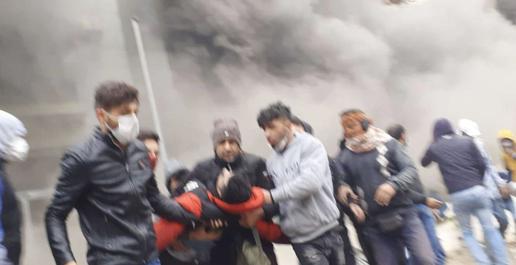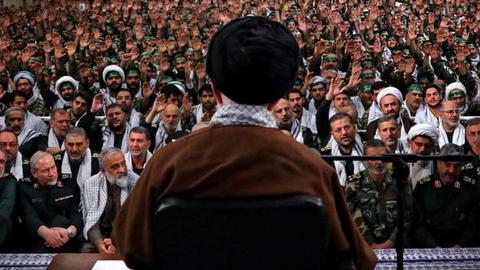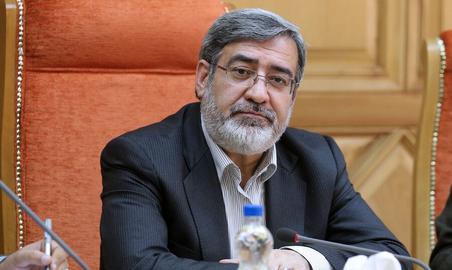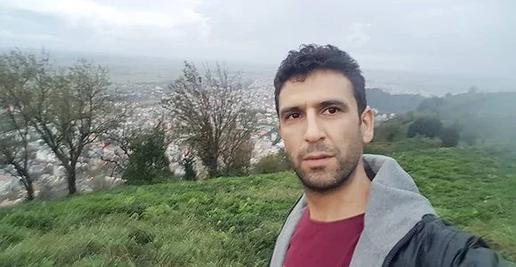In November 2019 protests erupted across Iran, prompted by Iranian authorities’ sudden decision to raise the price of gasoline threefold. Police and security forces were mobilized to suppress the demonstrations, which spread quickly. According to Iran’s official figures, more than 250 people were killed, though Amnesty International has stated that at least 304 people lost their lives during the turmoil.
The idea to raise prices was tabled by the Supreme National Security Council, and confirmed by the Economic Coordination Council of the Heads of the Three Branches, an institution established by Supreme Leader Ayatollah Ali Khamenei. Implementation was entrusted to Minister of the Interior Abdolreza Rahmani Fazli, who is also Chairman of the Supreme National Security Council as well as Deputy Commander-in-Chief of the Islamic Republic's police force. As Khamenei later confirmed, the Supreme Leader himself had to give his personal approval before it happened.
The question remains: who is really responsible for what happened?
Officially, Rahmani Fazli’s three roles meant he had total control over implementing the new policy to crack down on protesters — a power delegated to him by Ayatollah Khamenei. He was in charge of “maintaining domestic security” using the tools at his disposal: Iran’s police force and security personnel.
The National Security Council is made up of representatives from the Ministry of Intelligence, the Islamic Revolutionary Guard Corps, the army and the police. If he chooses, the Minister of the Interior can also invite representatives of relevant parliamentary committees and the General Prosecutor to attend Council meetings. However, the decisions of this council, which the minister himself implements, are actually regarded as "recommendations" after "consultation", meaning Rahmani Fazli is entitled to act at his own discretion.
In other words, the Minister of the Interior, part of Hassan Rouhani's government, not only had full authority to carry out his remit of taking “coordinated decisions and measures to prevent and deal with security issues” and could choose when to implement his decision to suppress protests, he also had the support of the Security Council. When members of parliament questioned Fazli about the massive crackdown on protests, he said he had every right to do so, including by using live ammunition. Under his leadership, shots were fired at protesters' feet. They were also shot at protesters’ heads.
Rahmani Fazli has made such statements and similar ones on numerous occasions. Given this, he has shown that he was directly responsible for suppressing the protests, and the consequences: the unprecedented killing of protesters.
However, if Fazli had not clearly explained how he carried out the crackdown against protesters and had not taken responsibility for the crime, at least indirectly through his comments that come across as clear boasts, it would not be easy to prove his culpability because he could blame other armed forces for firing on the protesters, forces over which he had no control.
Despite having the opportunity to blame someone else, Rahmani Fazli's comments show he accepts responsibility, as he has made it clear he took the final decision given the security challenges with which he was presented.
However, although he may be the key defendant in this case were it to ever come to trial, there were many others who had powers and used them. Each should be held accountable for their part in the massacre.
Back in November 2019, as the protests went into a third day, Ayatollah Khamenei delivered a speech in which he branded the protesters villains — also a key piece of evidence that shows he believed there was justification for repression. Iranian President Hassan Rouhani, as Rahmani Fazli's superior, has supported the interior minister's decision through his actions and behavior, or at least through the fact that he did not stop him from his bloody suppression of the protesting citizens.
It is worth pointing out that the protesters were unarmed. There are numerous videos of the protests that show armed plainclothes as well as law enforcement officers in military uniforms firing at unarmed civilians.
Under international law — which the Islamic Republic recognizes and is required to uphold as part of this acknowledgment — firing on unarmed protesters with intent to kill is absolutely prohibited, and targeting an armed protester is permitted only if the person is in imminent threat or on the verge of assault that could incur irreparable injuries to government officials or other protesters or civilians. In such cases, shooting such a person with the intention of disarming or averting his immediate danger is allowed, but it should not unduly threaten his life.
Officers under the command of Minister of the Interior Abdolreza Rahmani Fazli, as is clear in video footage and public statements made by the victims' families, opened fire without observing any international protocols, even ones for armed conflicts. Rahmani Fazli is responsible for the bloody suppression of the 2019 protests, but his criminal responsibility does not in any way relieve his superiors of their responsibility.
If Rahmani Fazli was put on trial and asked to defend himself under the legal procedures a fair trial affords, he could argue this, and he could help a jury and judge determine the position of other defendants in the case. As it stands, he is the only person taking responsibility, although not in any official capacity. Even if there were plans for some sort of justice to be done — and there aren't — he would not be held accountable, and nor would anyone else.
Related coverage:
Tanks and Machine Guns Used to Subdue People of Mahshahr
Iranian Doctors: The Protesters' Heads and Hearts Were Targeted by the Police
Next month, they were going to marry. But last week, they killed him
IranWire Pays Tribute to the Protesters Who Lost Their Lives
visit the accountability section
In this section of Iran Wire, you can contact the officials and launch your campaign for various problems



























comments